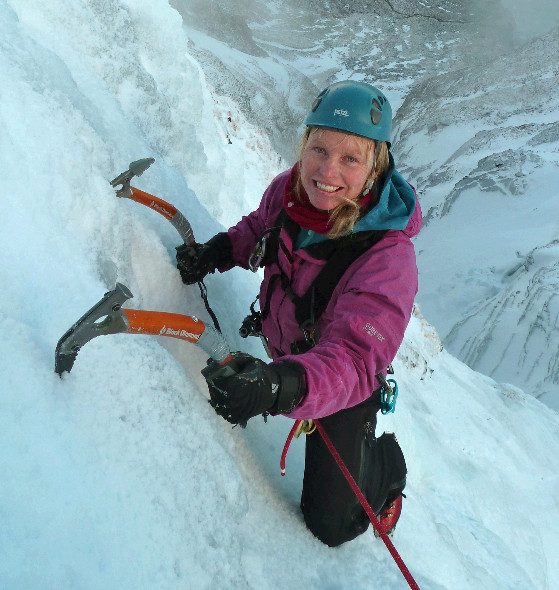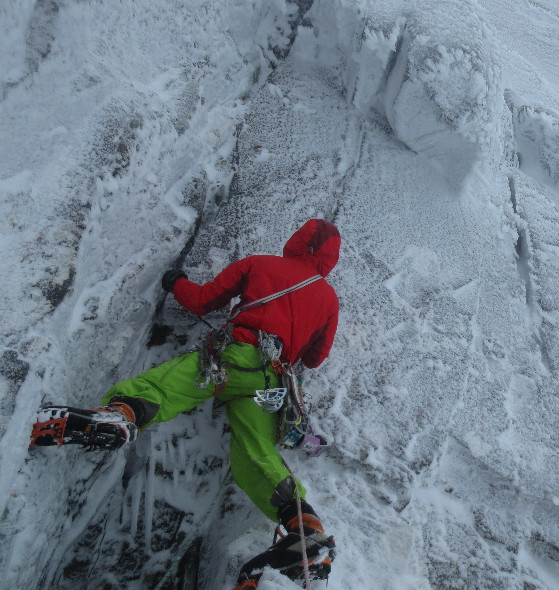Great variation is possible across Scotland and winter climbing involves the following different styles:
Gully climbing (either frozen watercourses or snow/neve)
Ice climbing (frozen watercourses over rock buttresses)
Snow/rime ice on buttresses (as found on Ben Nevis)
Mixed climbing (on rock buttresses with varying amounts of snow/ice)

There are big differences between traditional gully climbing...

...and climbing iced-up rock routes
Specific to winter although many of the same rules apply as for summer. Resting and pulling on gear would mean that it is not a clean ascent. Similar to resting on axes that are clipped in to your harness. Ice axes are used to aid the climbing. If the route is easier without axes then the route is not in condition.
Many of the best winter climbing venues in Scotland are north-facing cliffs, which hold considerable amounts of vegetation. It is important for conservation reasons that vegetation is well frozen to minimise damage. Ask yourself if itís in nick. Before you do it!
The general consensus for winter climbing is that the conditions should be frozen and snow covered. When climbs are not in condition this causes unnecessary damage to the routes.
Summer trad gear is placed with the addition of turf protection and ice screws. Pegs are carried by many climbers but ideally only used if absolutely necessary. Knowing how to place them correctly is important and they should not be left in the rock. Watch some videos explaining the placement of winter protection.
Got the hang of summer grades? Well here is the next grading system.
They are similar in the sense that the routes are graded for difficulty and seriousness. The overall grade of the route is written in Roman Numerals and goes from I to XI
Grade I
Simple snow slopes with possible corniced exits.
Grade II
Gullies with individual or minor pitches, high angled snow with difficult cornices and easier buttress routes.
Grade III
Gullies containing ice or mixed pitches up to 75 degrees, normally with one substantial pitch or several lesser ones.
Grade IV and above get an additional grade for pitches within the climb. For example a grade V climb might look like V 4, V 5 V 6 or even V 7. The average within them is the V 5 which could be seen as a benchmark grade V. The V 6 and V 7 will be hard but should have good protection. If the number is lower though, such as V 4 then the route may not be as technical but it will be serious.